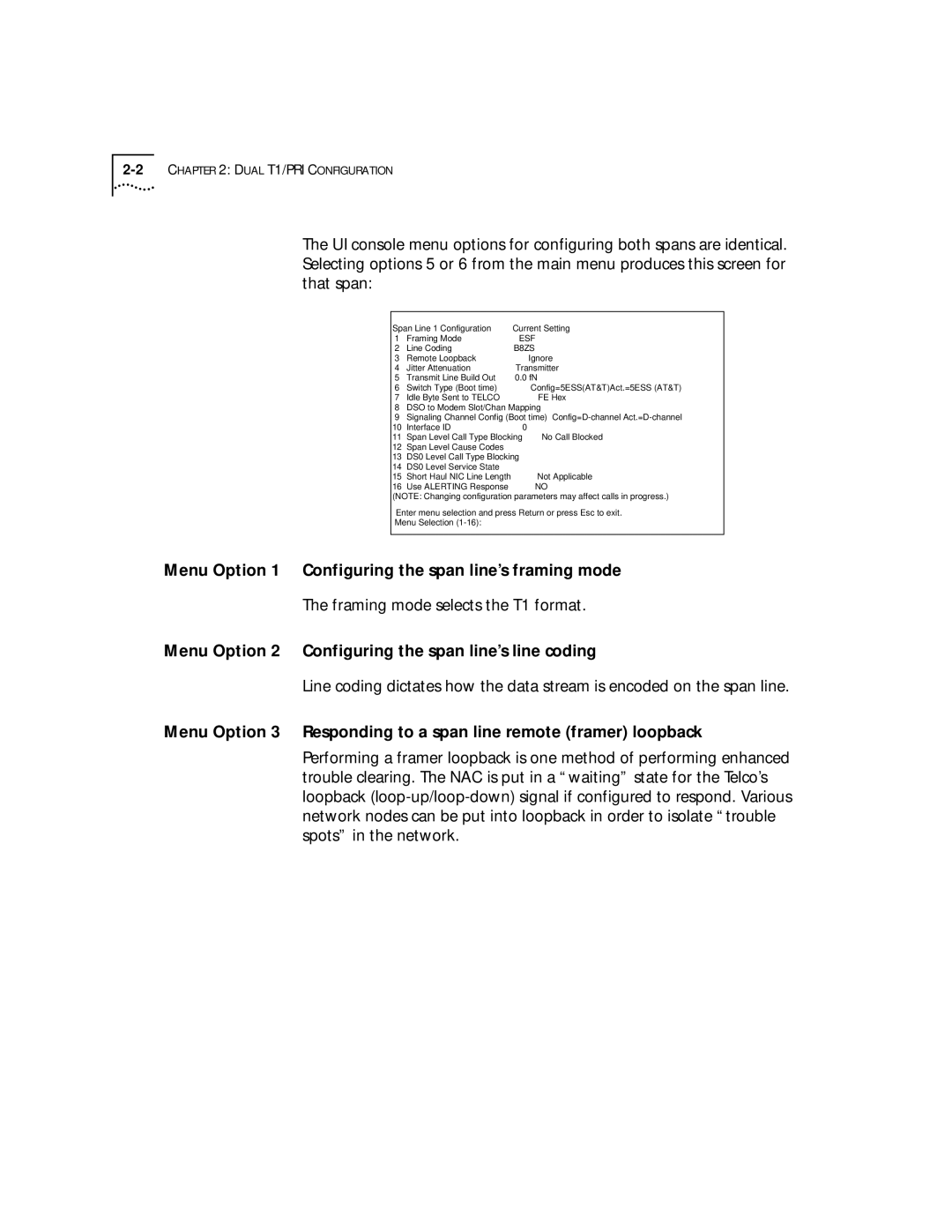
The UI console menu options for configuring both spans are identical. Selecting options 5 or 6 from the main menu produces this screen for that span:
Span Line 1 Configuration | Current Setting | ||
1 | Framing Mode | ESF | |
2 | Line Coding | B8ZS | |
3 | Remote Loopback |
| Ignore |
4 | Jitter Attenuation | Transmitter | |
5 | Transmit Line Build Out | 0.0 fN | |
6 | Switch Type (Boot time) |
| Config=5ESS(AT&T)Act.=5ESS (AT&T) |
7 | Idle Byte Sent to TELCO |
| FE Hex |
8 | DSO to Modem Slot/Chan Mapping | ||
9 | Signaling Channel Config (Boot time) | ||
10 | Interface ID | 0 |
|
11 | Span Level Call Type Blocking | No Call Blocked | |
12 | Span Level Cause Codes |
|
|
13 | DS0 Level Call Type Blocking |
| |
14 | DS0 Level Service State |
|
|
15 | Short Haul NIC Line Length |
| Not Applicable |
16 | Use ALERTING Response |
| NO |
(NOTE: Changing configuration parameters may affect calls in progress.)
Enter menu selection and press Return or press Esc to exit.
Menu Selection
Menu Option 1 Configuring the span line’s framing mode
The framing mode selects the T1 format.
Menu Option 2 Configuring the span line’s line coding
Line coding dictates how the data stream is encoded on the span line.
Menu Option 3 Responding to a span line remote (framer) loopback
Performing a framer loopback is one method of performing enhanced trouble clearing. The NAC is put in a “waiting” state for the Telco’s loopback
